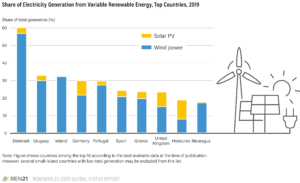What do we analyze through the IEA of energy?
Recent IEA analysis suggests that in 2018, India’s funding in solar PV turned into extra than all fossil gas sources of energy generation together. Large-scale auctions have contributed to swift renewable strength improvement at rapidly lowering expenses. By December 2019, India had deployed a total of eighty-four GW of grid-related renewable energy potential. By assessment, India’s general generating capability reached 366 GW in 2019 Amigo Energy Rates . India is making progress closer to its target of a hundred seventy-five GW of renewables using 2022. In September 2019, the top minister of India, Shri Narendra Modi, introduced that India’s strength mix would finally include 450 GW of renewable strength capability. Progress closer to these targets would require a focus on unlocking the power needed for powerful device integration. This can probably be performed by using enhancing the design of renewables auctions, with clean trajectories and criteria to reflect first-class, vicinity, and machine cost, alongside measures to foster grid expansion and call for-aspect response throughout India. India has been addressing strength-related environmental pollution since the 1980s, along with air, water, land, and waste problems. Reducing the health influences of air pollutants is a key priority.

What do you think about the NCAP?
Over the years, the government has been stepping by step bolstered rules to fight air pollutants and adopted the National Clean Air Programme (NCAP), which makes a specialty of tracking and enforcement. Real progress on the floor has to date been restricted, with the cut-off date for the enforcement of stringent air pollution requirements for thermal power plants driven lower back from 2017 to 2021/22. However, the implementation of the NCAP is anticipated to assist enhance this problem. IEA. India is mainly vulnerable to weather trade effects and is uncovered to growing water stress, storms, floods, and other excessive climate events. Adaptation and resilience of the power gadget to those excessive weather conditions should be a high political priority. Furthermore, the electricity region is a huge water person. As India’s strong demand keeps growing, the government should ensure that energy-making plans take into account the water–electricity nexus, in addition to destiny space cooling wishes. Energy generation and innovation allow “Make in India” Energy studies, improvement, and deployment (RD&D) may be a robust enabler of India’s electricity coverage desires at the same time additionally contributing to broader country-wide priorities consisting of the “Make in India” manufacturing initiative. Through the initiative, the authorities are running to attract worldwide corporations to provide sun PV, lithium batteries, sun charging infrastructure, and different superior technologies in India. The government is strengthening its innovation efforts in a vast variety of electricity-era regions, such as cooling, electric mobility, clever grids, and superior biofuels.
What do you mean by RD&D funding?
India’s innovation-precise coverage assistance has been vital in driving power era improvement. As a part of its climate coverage agenda, the government has pursued a mission-based method in lots of coverage regions, which include the sun, water, and energy. India has also been a pacesetter in Mission Innovation and different multilateral collaborations, along with the IEA Technology Collaboration Programmes. Recent years have proven a marked increase in smooth electricity RD&D funding, especially as India works to double its spending over five years beneath Mission Innovation. However, funding efforts are unfolding thinly and widely throughout the government and its public quarter groups. India ought to gain from integrating RD&D priorities with broader power coverage goals.
